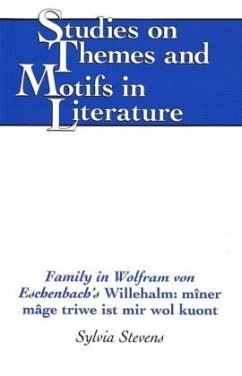Family in Wolfram von Eschenbach's "Willehalm": mîner mâge triwe ist mir wol kuont explores Wolfram von Eschenbach's use of familial relationships in Willehalm to "recreate" his French literary source, Bataille d'Aliscans , for his German audience. The individual chapters of the study are arranged to demonstrate Wolfram's significant contribution to a popular tale during the early Middle ages. As each familial relationship is explored, Wolfram's creative restructuring of the tale (even though it is a fragment) becomes clear and the reader gains insights into other issues that are important in the poem, such as loyalty and love. Again and again, Wolfram returns to the greatest dilemmas in his tale: how can a person successfully resolve the tension between the demands of loyal service and the needs of the family bond? Therefore, when Wolfram highlights the relations between a father and his child during the opening lines of the poem, he sets the stage for a multifaceted conflict atOrange. The relationships between the Christian God and His followers, between Heimrich and his sons, and between Terramer and Gyburg reveal the standard of behavior against which both they themselves are judged and also every other prominent character in the poem. The various familial relationships that are explored throughout the study would likely have been the cornerstone of the events following the Matribleiz scene in the poem, and these relationships might even have offered a resolution of the tension between the life of service and the family bond that still exists at the end of Willehalm .

